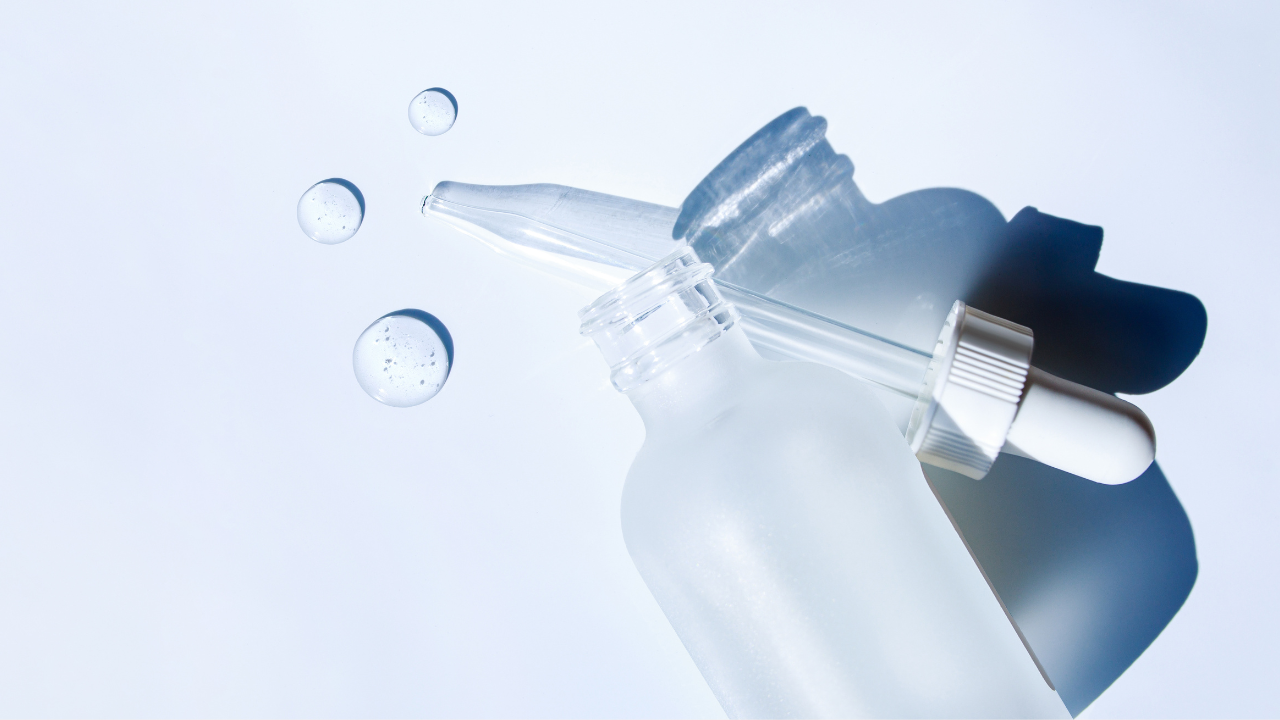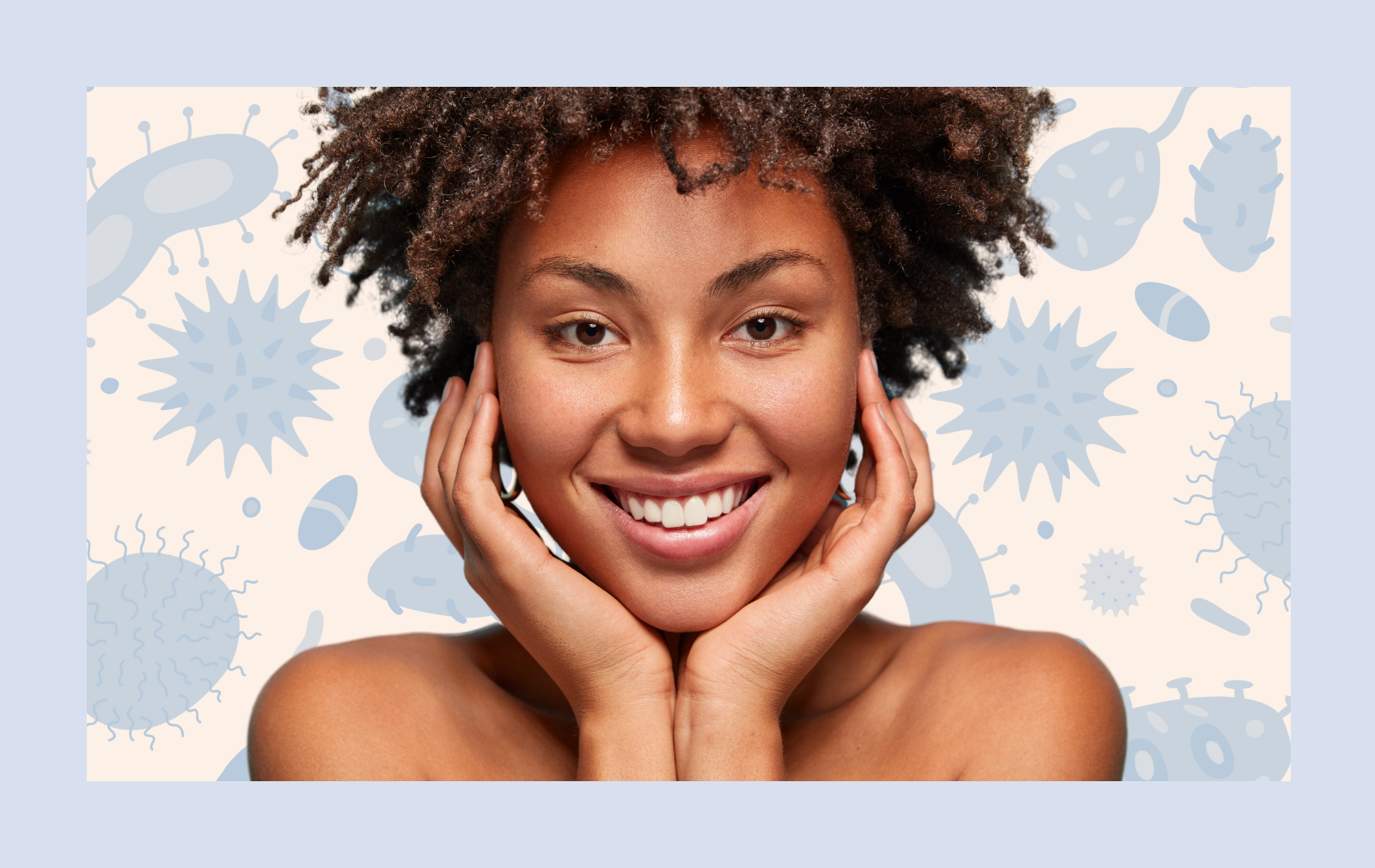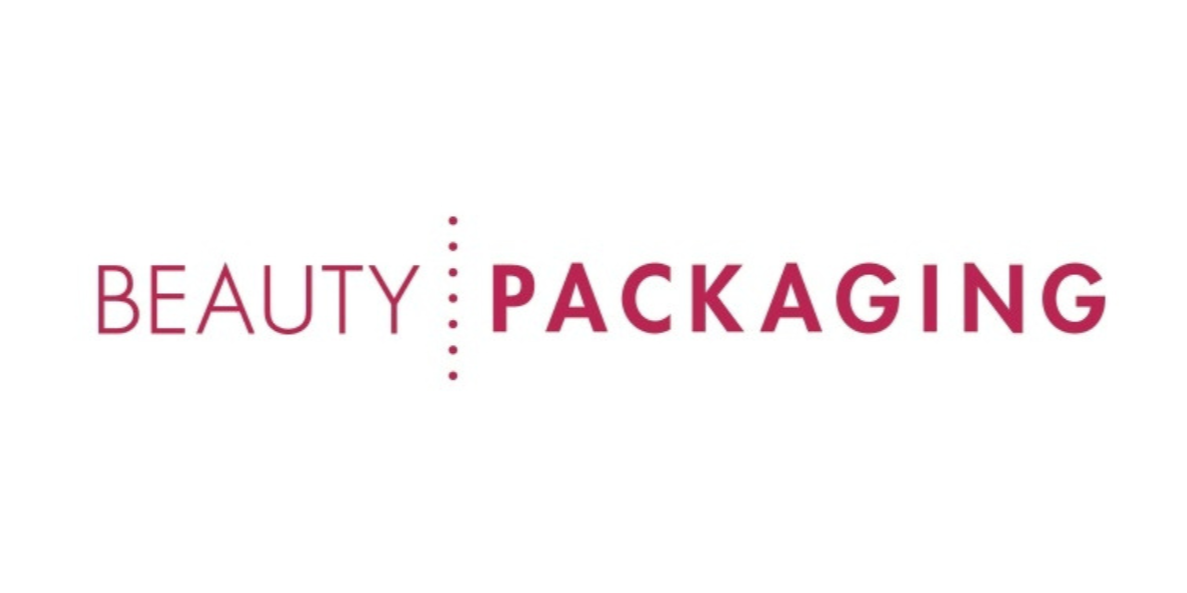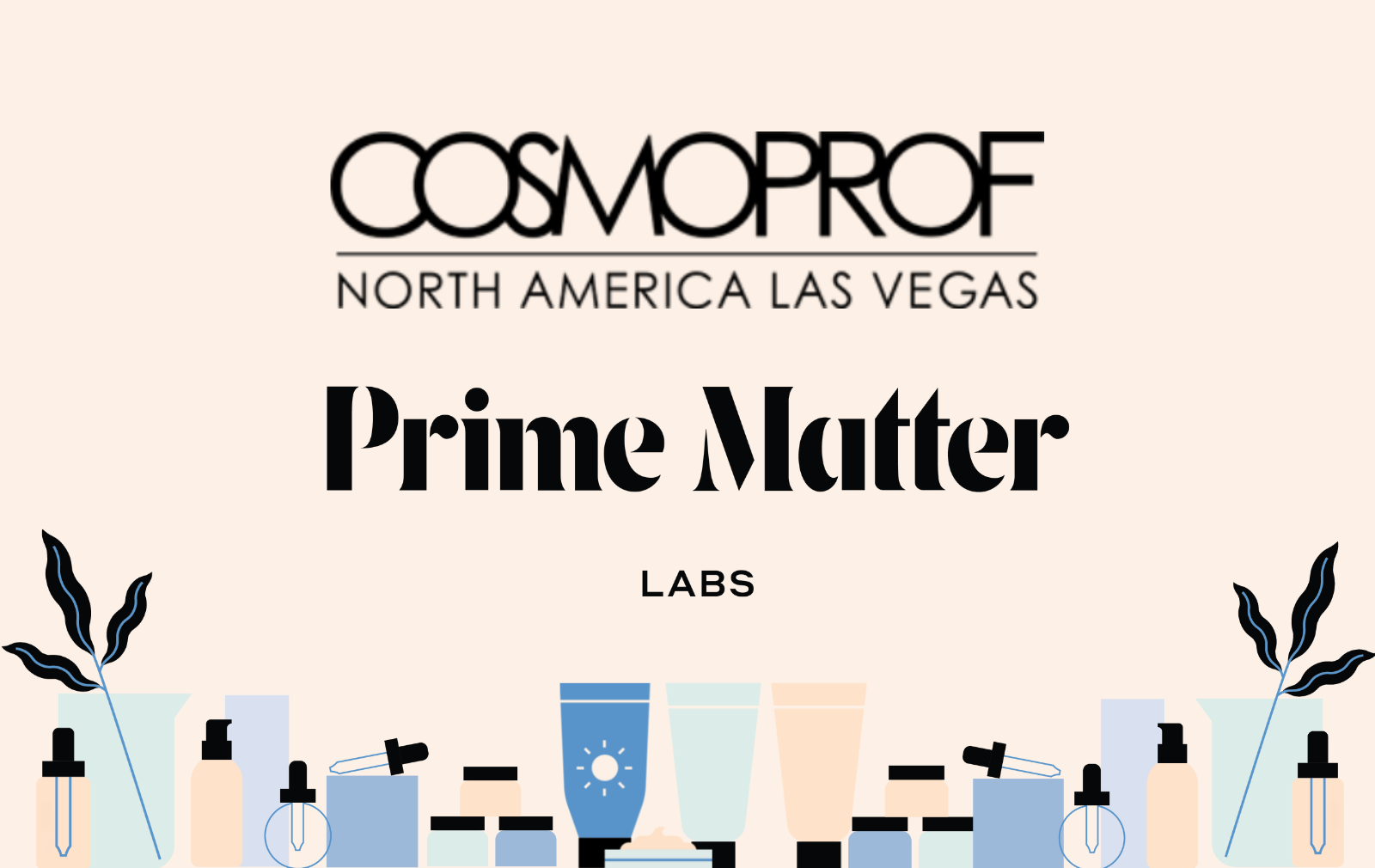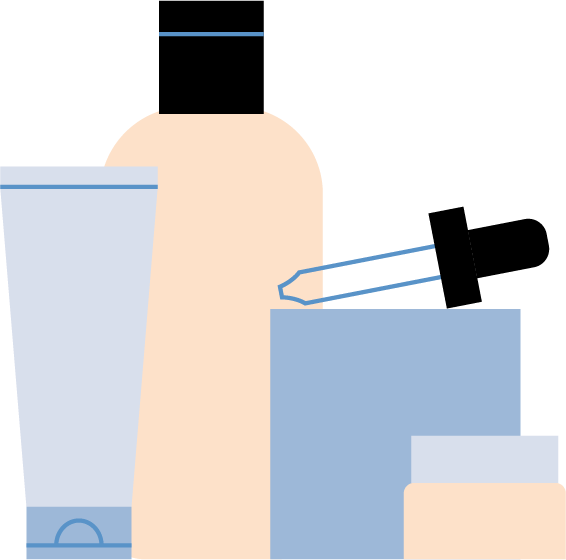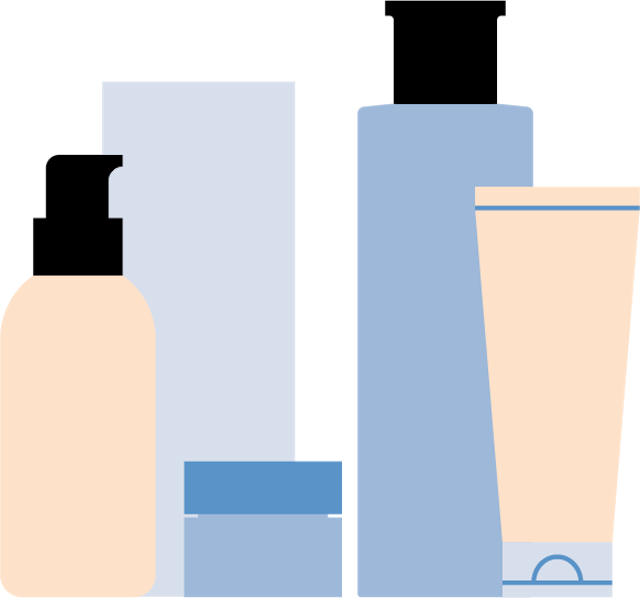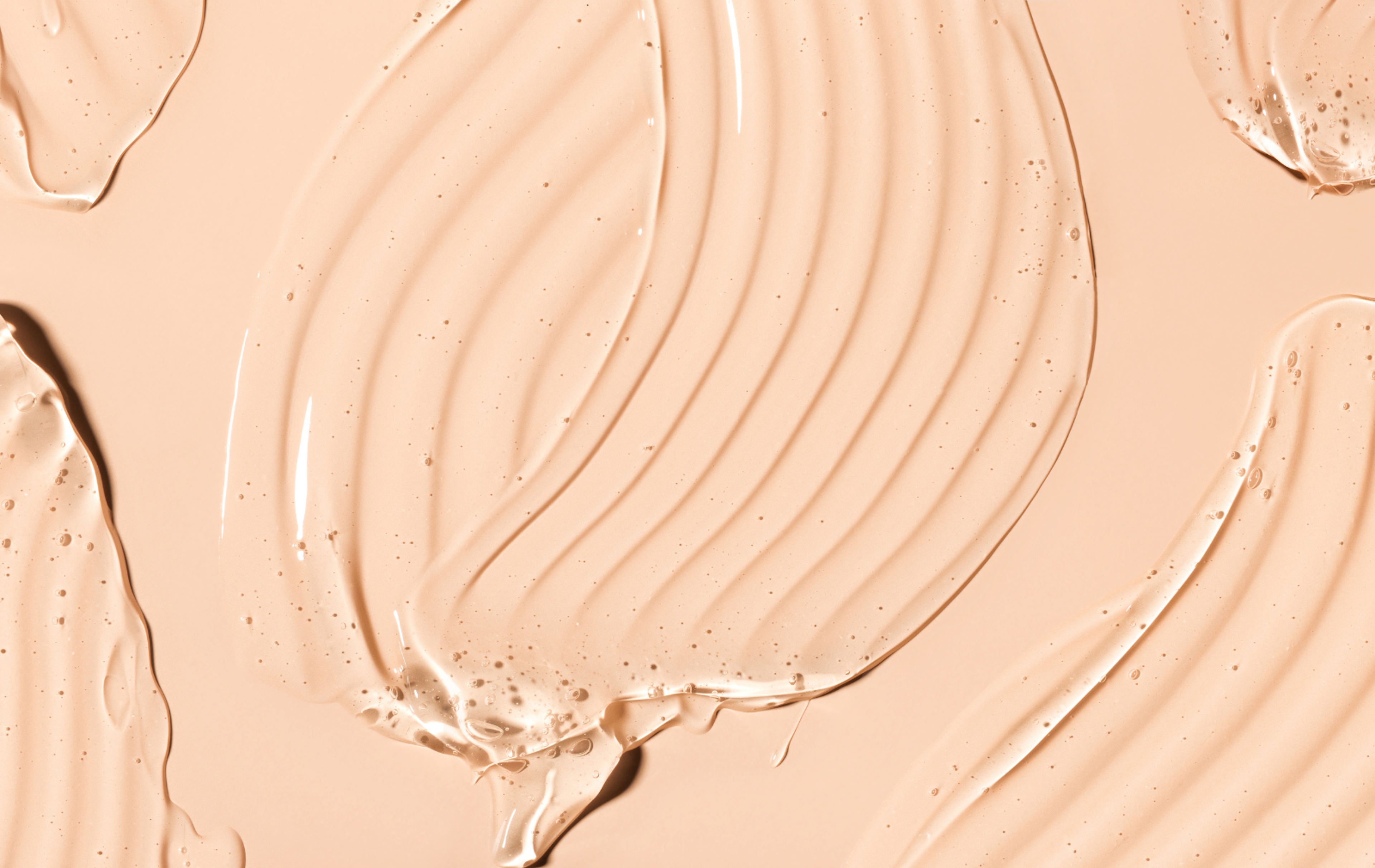
In the Prime Matter Labs 2024 Beauty Trend Report, we identified some of the top trends in beauty in 2024, including efficacious, science-backed products and the enhanced ingredients driving them. The report also called out the increased significance of skin barrier repair and strengthening that we’re seeing currently in the beauty industry. We’ve compiled a list of seven of the rising ingredients that tap into some of the trends that we think will grow in popularity in 2024.
Ectoin
Benefits: Hydration, Skin Barrier Boosting, Soothing
Ectoin has been receiving praise lately as “Skin Care’s Must-Have Ingredient This Year” and “Why Ectoin May Be the New Niacinamide,” helping it to become one of the top “must have” ingredients in beauty with #Ectoin receiving over 42.8 million views on TikTok.
Ectoin is a naturally occurring extremolyte, or a molecule that helps organisms thrive in harsh environments, which was originally discovered in microorganisms living in extreme conditions. It is used for hydrating, protecting and soothing skin and is generally safe to use for all skin types. Ectoin has strong water-binding properties, which can help improve skin hydration. It forms a protective layer on the skin's surface, reducing water loss and enhancing moisture retention. It can also help soothe skin and strengthen the skin barrier, and helps to protect skin from environmental stressors, defending against free radicals and oxidative damage.
While it’s primarily used in skin care, you can also find this ingredient in sun care products for its protective benefits and in hair care for its hydrating and protective properties that can benefit hair by boosting moisture retention, protecting against environmental damage, and promoting overall healthy hair.
Growth Factors
Benefits: Firming,Elasticity, Smoothing, Brightening, Hyperpigmentation, Hydration, Rejuvenation
Growth factors are naturally occurring proteins that play a crucial role in cell communication and regeneration. They saw a surge in popularity in 2023 as a science-backed, naturally occurring ingredient with the potential to help rejuvenate aging skin. Growth factors stimulate cell communication and regeneration. As we age, our body’s production of these messengers slows down, leading to signs of aging like wrinkles and loss of firmness. Topical growth factors aim to mimic the natural signals and stimulate rejuvenation.
There are different types of Growth Factors with a variety of benefits. Epidermal Growth Factor (EGF) supports collagen and elastin production and is great for overall skin health, while Fibroblast Growth Factor (FGF) promotes skin rejuvenation. Platelet-Derived Growth Factor (PDGF) supports healthy collagen levels, boosts skin elasticity, and accelerates skin rejuvenation. Different combinations of growth factors may be incorporated in a formula to provide targeted benefits.
It’s important to work with experienced chemists that understand the challenges of the ingredient which can be prone to degradation when exposed to light, heat, and air. Their larger molecule size can also pose a challenge to delivery to target cells, which may require encapsulation or penetration enhancers to facilitate deeper delivery and maximize results.

Kojic Acid
Benefits: Brightening, Even Complexion
Kojic Acid is a mild AHA (alpha-hydroxy acid) derived from a type of fungus and best known for its ability to combat hyperpigmentation and promote a brighter, more even complexion. Kojic Acid soap was recently named as a rising trend by SPATE with an average of 32,100 monthly Google searches, representing 77.6% year-over-year growth. This shows there’s a growing consumer awareness around the benefits of this ingredient with the opportunity to capitalize on the trend in range of skin and body care products.
It can be paired with other brightening ingredients and AHA’s, BHA’s or hydroquinone or can be used alone for a milder effect. The ingredient is often recommended for darker skin tones because it typically carries a lower risk of hypopigmentation, where patches of skin lose their natural color, which is especially beneficial for darker skin tones. It can also be helpful for post-inflammatory hyperpigmentation (PIH), which darker skin tones are more prone to.
Next Gen Retinol
Benefits: Brightening, Exfoliation, Hyperpigmentation, Smoothing
One trend that we identified in our 2024 Beauty Trend report was that beauty staple ingredients will be getting upgrades. Retinol, a derivative of Vitamin A, is one of the most popular star ingredients in beauty and will continue to be a staple on beauty shelves due to its well-documented benefits. Known for its plumping and smoothing benefits, the ingredient can be found in many different forms and strengths, from prescription only (Tretinoin) to OTC (Retinol, Retinol Esters, Retinaldehyde) to plant-derived alternatives (Bakuchiol.) Despite the popularity of the ingredient, there are some effects that may make some consumers hesitant. It can make skin sensitive to light, cause redness or dryness, and can weaken the skin barrier if overused.
Hydroxypinacolone Retinoate (HPR), or Granactive Retinoid, is gaining popularity as a potential alternative to Retinol due to its ability to deliver the benefits of Retinol without the irritation. Unlike Retinol, which needs to be converted to its active form (Retinoic Acid) in the skin, HPR is already in its active state, potentially leading to faster and more potent effects. HPR may also cause less dryness and redness than Retinol, due to its more direct activation pathway.
Another form of Retinol that improves on the staple ingredient is Retinaldehyde, which is a stable form of Retinal Acid. It is one step closer to the active form of Retinol (Retinoic Acid) and generally considered 11 times more potent than Retinol, potentially offering faster results. The ingredient is highly unstable so it can prove challenging to formulate with but there are new technologies that use encapsulation for more efficient delivery. Brands should work with R&D to evaluate which form is best for their target audience’s needs.
Peptides
Benefits: Brightening, Hydrations, Moisturizing, Skin Barrier Boosting, Skin Elasticity, Smoothing, Soothing, Promoting Hair Health
* Benefits vary depending on type of peptide
Peptides aren’t new but you may have noticed they’ve been increasingly showing up in beauty products across categories. The cosmetic peptide manufacturing market is predicted to hit $324.4 million in 2030, riding on a strong 5.6% CAGR, driven by consumer demand for personalized solutions like microbiome approaches.
Peptides are short chains of amino acids, the building blocks of protein, that act as messengers that communicate with cells. They are small molecules that help your skin cells to communicate better and work more efficiently on a specific task. Targeted peptides have been developed to combat specific issues like hyperpigmentation, dark circles, and hair thinning. There are thousands of different types of peptides, each with its own unique function, so it’s best to work with experienced formulators to assess what is the best fit for your vision.
There has also been work done to explore new ways to better deliver peptides to the skin, including encapsulation in liposomes and nanoparticles for better penetration. Peptides are especially beneficial for brands looking to target signs of aging as protein levels will naturally decrease with age. Topical peptides can help by promoting specific functions that can encourage firmer-looking skin.

Pre/Pro/Post Biotics
Benefits: Hydrating, Skin Barrier Boosting, Soothing, Promoting Healthy Hair
*Benefits vary depending on ingredient
Products that promote a healthy skin microbiome were all the rage in 2023 and are expected to maintain their popularity in 2024 now that consumers are more educated on how a healthy skin microbiome affects the appearance of their skin. Pre, Pro and Postbiotics are all essentially modulators that can influence the composition and activity of your microbiome.
Prebiotics act as "food" for the good bacteria and promote the growth of beneficial bacteria, creating a balanced microbiome that protects against harmful ones. You can find them in both skin care and hair care as they can help by soothing skin, improving skin barrier strength, enhancing hydration and also supporting a healthy scalp environment for hair. While probiotics offer similar benefits to prebiotics, they are less commonly found in cosmetic products as they are live bacteria and require temperature control. They can be added directly to products to colonize the skin or scalp with beneficial bacteria, and in theory, outcompete harmful bacteria. Postbiotics are the byproducts of good bacteria and can already be found in many beauty products in the form of popular ingredients like lactic acid, hyaluronic acid and specific peptides.
Salicylic Acid (for scalp care)
Benefits: Clarifying, Exfoliation
Salicylic acid is a beta hydroxy acid (BHA) known for its exfoliating properties and commonly found in acne treatments. With interest in scalp care on the rise, we’re seeing more skin care star ingredients make their way into hair care to bring the same benefits to scalp skin and promote healthier hair. As an ingredient in a hair care, it helps to remove dead skin cells, dirt, and product buildup that can clog hair follicles and contribute to itchy scalp and even hair loss. It can also help to regulate sebum on the scalp, preventing excessive oiliness that can lead to greasiness and clogged follicles.
Get started on your project on our Create Your Product page. Learn more about products in our innovation collection in our roundup of some of the 2023 OTC Innovation Formulas Developed at Prime Matter Labs.

